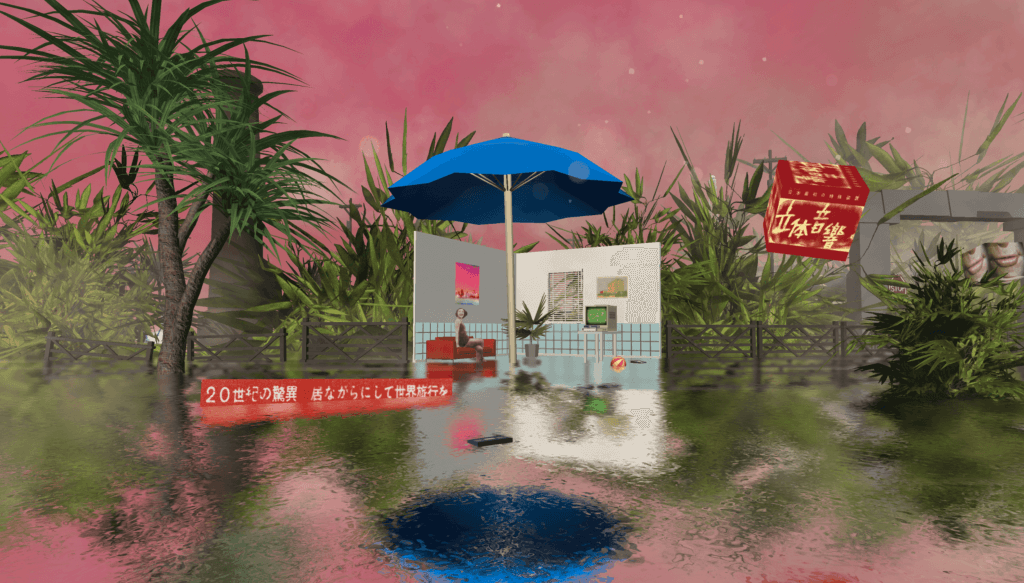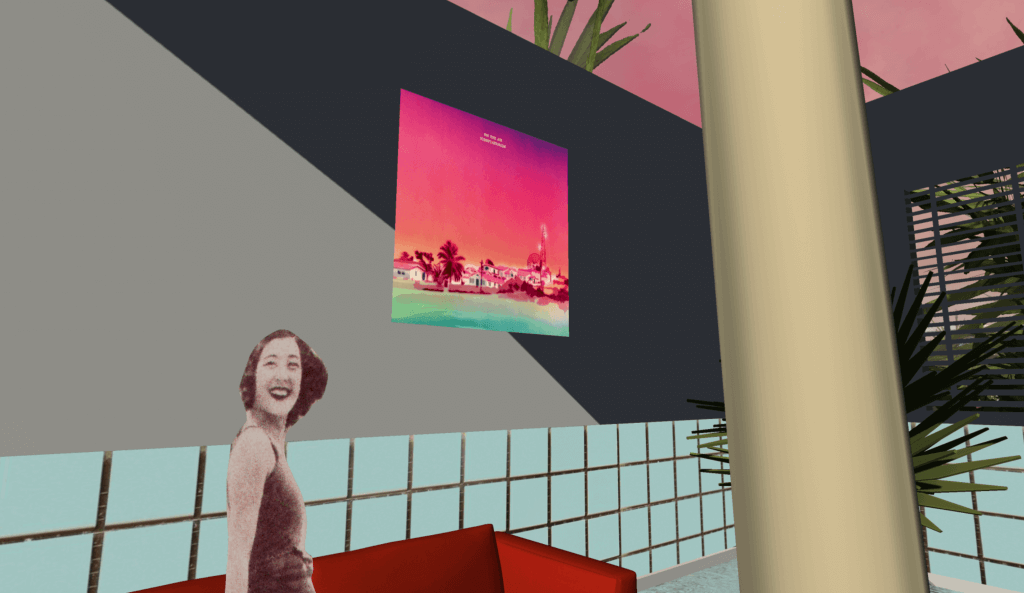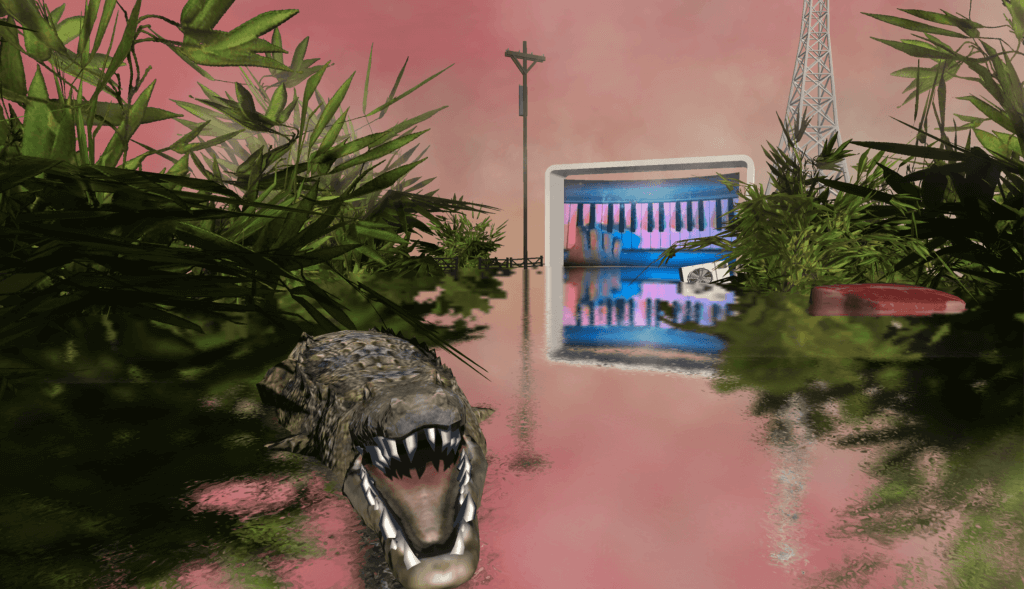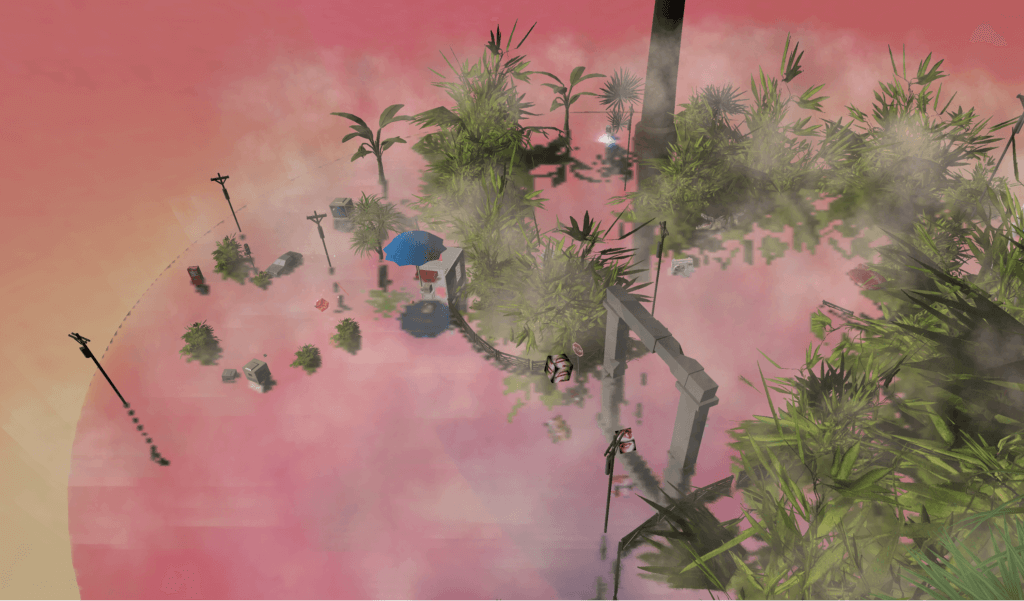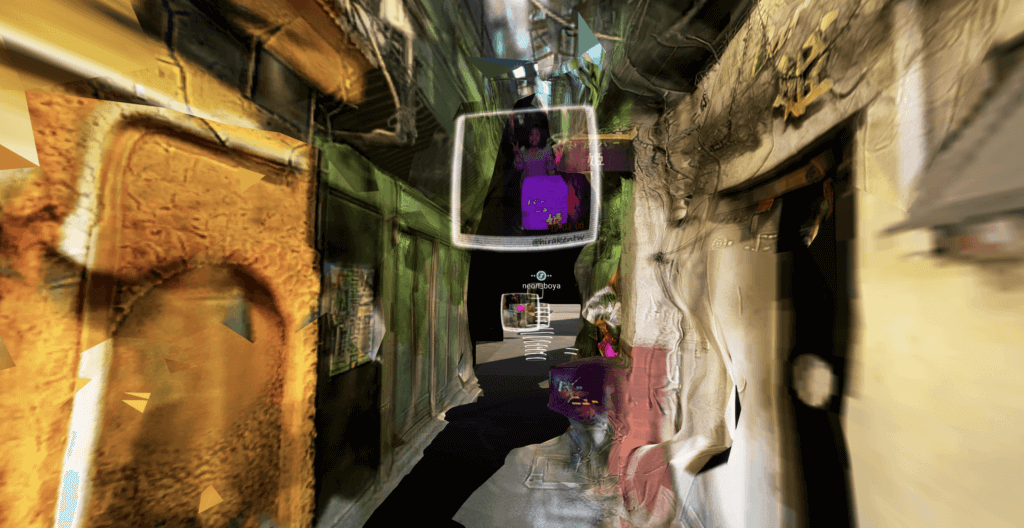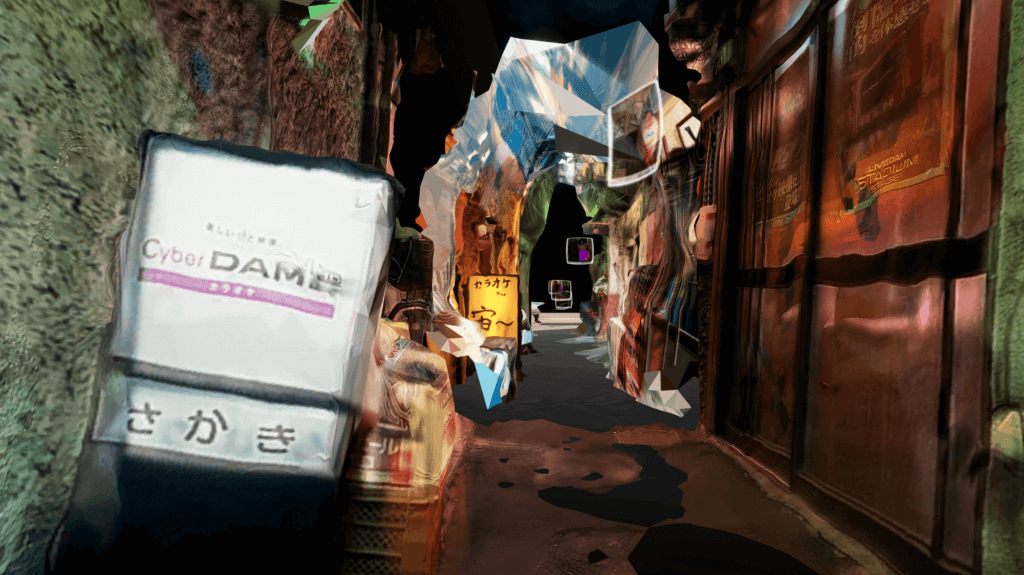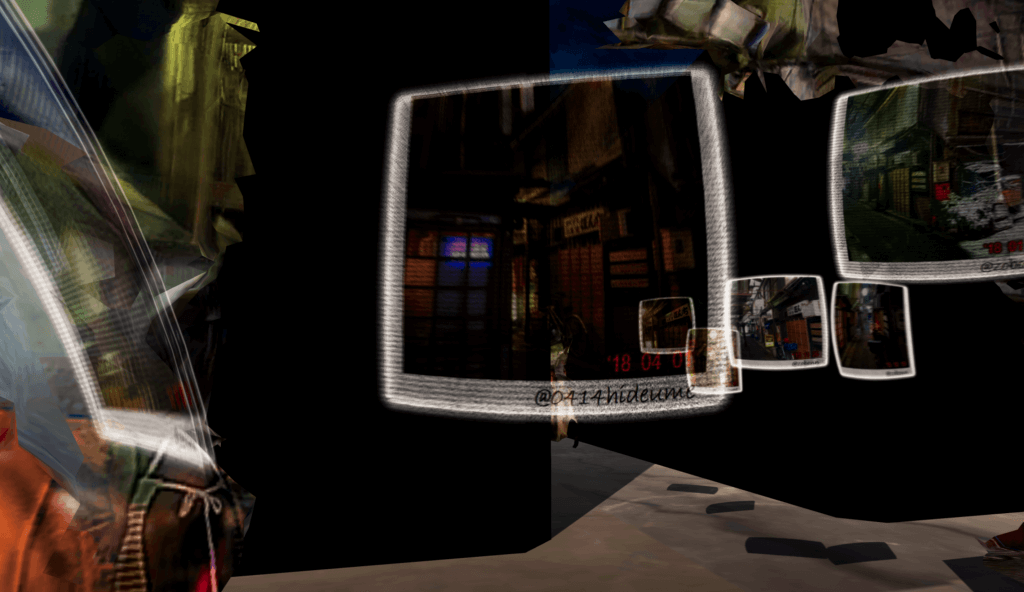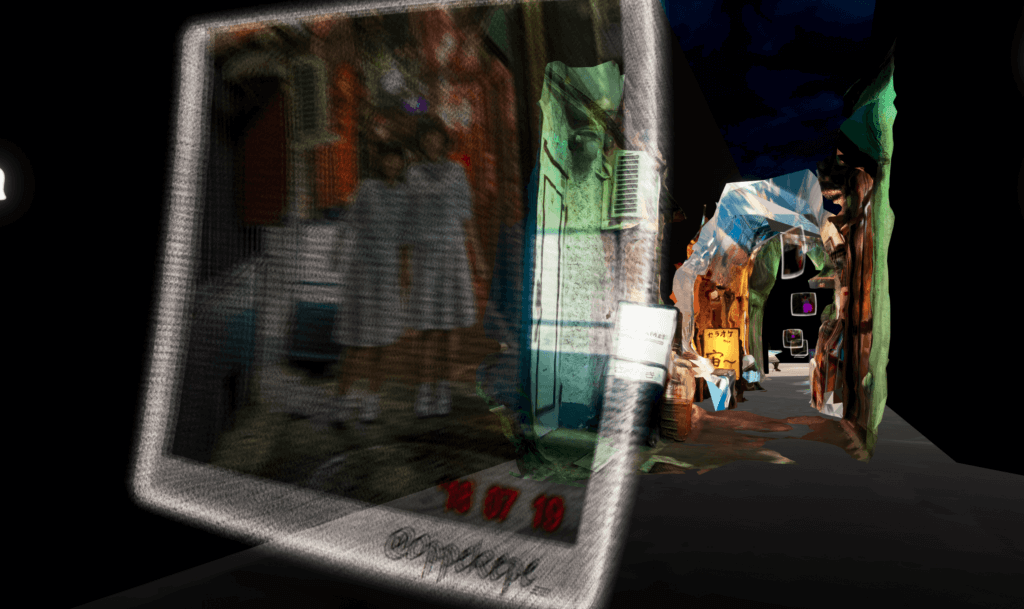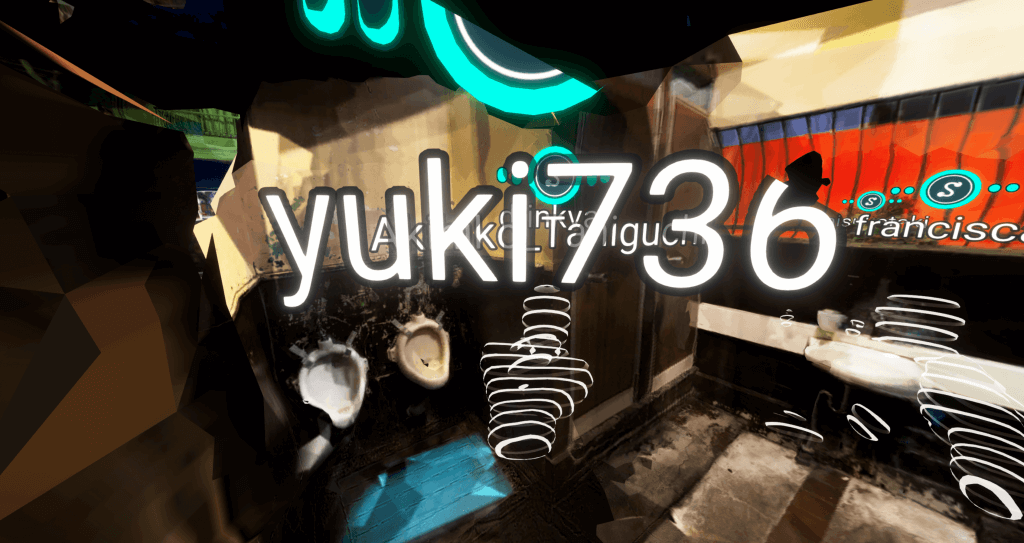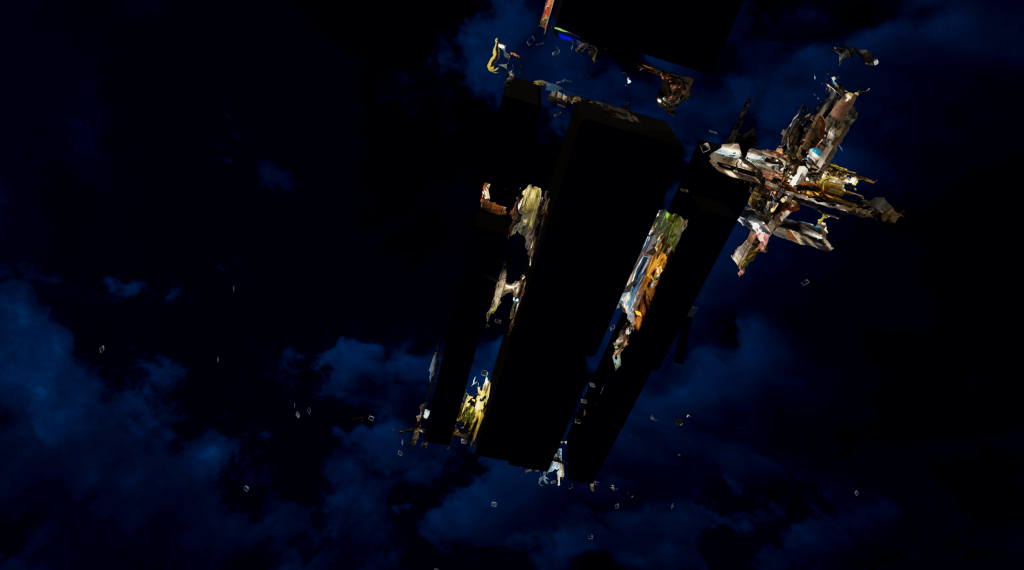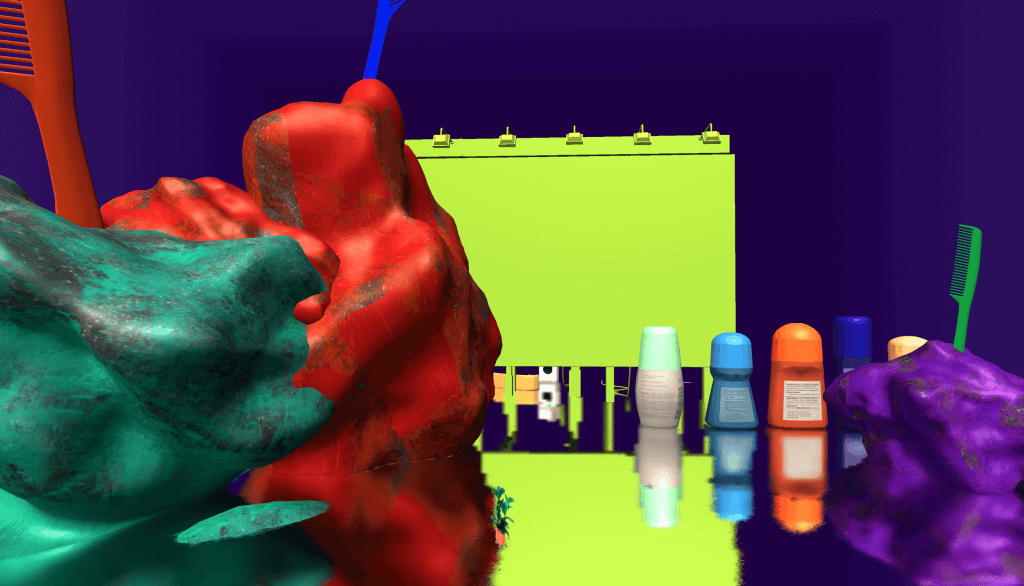In this article, I’d like to introduce you the tour report of DIG INTO NEWVIEW 2021 by STYLY.

DIG INTO NEWVIEW 2021 by STYLY is a tour-style event where you can experience the works created by the artists of the NEWVIEW project while sharing the fun with the guests.
At this event, media artist Akihiko Taniguchi, who has created a variety of art including VR and games, was invited as a talk guest, and we were able to experience five selected VR works created by the NEWVIEW project.
▼What is NEWVIEW?
The NEWVIEW project is a worldwide experimental project/community where people who embody contemporary culture such as fashion, music, video, and graphics gather to pioneer and expand the design of creative expression and experience in 3D space.

The scene from the portal function introduced in this tour
Let’s take a look at some of the VR scenes we visited during the tour, with Mr. Taniguchi’s talk.
1.Strange Swamp Beat by VIDEOTAPE MUSIC
The tour started with the work from 2018, a particularly early year for STYLY.
Created in collaboration with VIDEOTAPEMUSIC, it creates an experience that envelops you in the nostalgic space of the Music Video.
On the wall are objects with the jacket titles “20th Century Wonders: Travel the World from Your Home” and “Japan’s First Special Device: Stereophonic Sound,” all clad in 1970s and 1980s science fiction imagery.
The emphasis on the promise of technology contrasts with the flimsy woman in the paper room, emphasizing the fictional nature of this space.
The slightly muffled pink background and randomly placed objects such as outdoor units, televisions, and cars give the impression that the music is a slightly older Japanese landscape than the typical Vaporwave image.
At the back of the first space, there is an area with trees and images of alligators and a piano.
The fear from the water that suddenly strikes you reminds you of the pain that sits in your unconscious.
The piano in the back of the space moves to set the rhythm of the dream while sharing the color tone of the entire space.
As this is an early STYLY work, there are no new technologies used in 2021, but the combination of music, objects, and images is enough to lure the viewer into the world of the piece.
Our guest, Akihiko Taniguchi, had two things to say about this work.
The first is that VR allows the artist to construct everything in the world.
An exhibition exists in continuity with the gallery where it is held and the culture and history that the city has cultivated.
VR, on the other hand, does not have any premise that this space was originally such and such, and becomes a space where only what the artist has made appear there is purely there.
In VR, you can enjoy a space where you can taste the spatial perception of the artist, which is different from the breath of a painting or music.
In this work, too, the irregular placement of objects and the space created with colors that are difficult to describe as “that color” are interesting to decipher how the artist interpreted the music to create the VR.
Secondly, I would like to talk about the collage. The random placement of objects in this work reminded Mr. Taniguchi of a scrapbook.
He told us that one of the assignments often given in art school is to make a scrapbook, and in this work, he collected objects and placed them in a space in the same way that you would cut out your favorite magazines or newspapers and put them in a book.
Just like saving a web page in a bookmark, storing music, images, videos, and objects in a space where they can be looked back at may lead to creating an archive of fetishism within oneself without being compressed into a medium.
STYLY currently has 19,000 scenes.
Even from these two perspectives, I felt that this story could amplify the fun of exploring different scenes.
2.Merging Memories by Kenichiro Hirai
The second work is about the memory of space, and how space can be recreated and made multi-layered.
This is the work that won the HIDEKI MASTUTAKE PRIZE at the 2019 NEWVIEW AWARD.
It is a VR work that uses photogrammetry to record and reconstruct the memories of the redevelopment of Tateishi, Katsushika-ku’s “Nonbei Yokocho” as the scenery changes.
The narrow and chaotic feeling of Nonbei Yokocho, the dirty post-war history of Tokyo’s back alleys, and the bustle of pubs and taverns are all squeezed into the space by photogrammetry.
The photogrammetric walls and ceilings are roughened and pieced together, reminding us of the time when we desperately try to preserve our fading memories, but they seem to fall out of our hands.
Mr. Taniguchi said that the space is similar to the physical sensation of being drunk.
In this work, photographs actually taken in Nonbei Yokocho are placed in the space so that visitors can experience the photogrammetric data and the memories captured in the photographs.
You can feel the reality of how people used to gather and live in this space as a physical sensation.
The so-called mixed reality (MR) is a way to extend the experience by superimposing a virtual space on the real space, but the idea of superimposing a photographic image on a virtual space may be the opposite of MR.
The photogrammetry in the restroom was strangely accurate, and Mr. Taniguchi and the participants would gather around and look at each other, wondering why the toilet was so beautiful.
Looking at the shape of the toilet, they seemed to be shared by both men and women, and we talked about how there might have been some stories about drunks here as well.
The experience is like hearing the song of a drunk who mistook a side street for the illumination of the Champs-Elysées.
This is a view from below of the model for the piece, “I’ll take you to play, that club where everyone gathers, play guitar and sing till morning, have fun, make noise and fall in love, Au Champs Elysees.”
Of course, it’s not all positive history, there was also the so-called red-light district nearby, where life was more or less continuous.
The hustle and bustle in the hidden back alleys seems to have been fantastically extracted.
3.Pale Ball’s Landing Life by Takuro Tamayama
The third work is by Takuro Tamayama, a contemporary artist who has presented many installations.
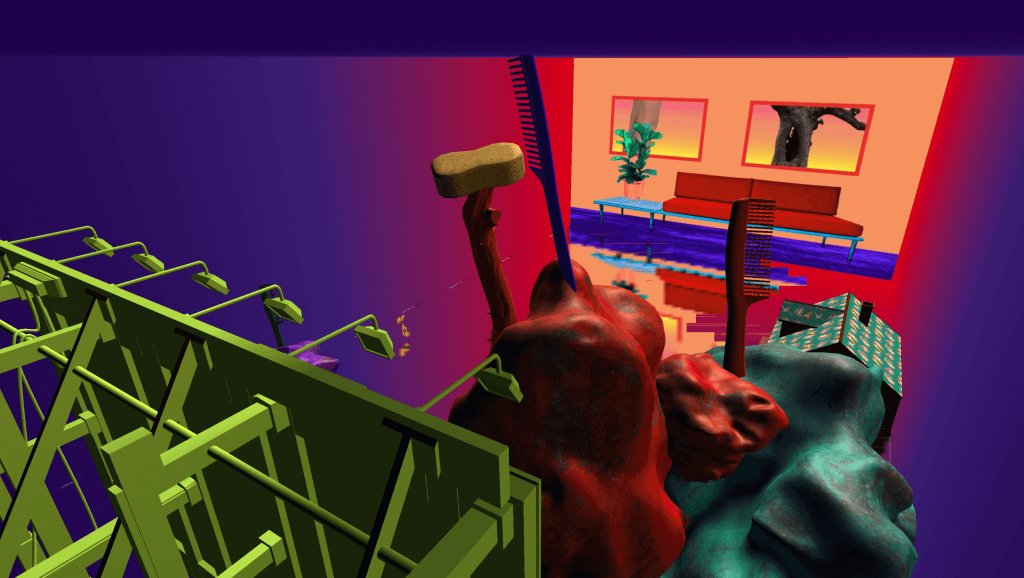
Distant view 1
Looking at this work, Mr. Taniguchi said that he felt it had a decolorizing effect, like the orange sodium lamps often found in old highway tunnels, where the short wavelength light makes everything look black and white.
The space is composed of photographic compositions, where common furniture and objects like rocks are burnished with color.
It could be said that the work uses light as a material for the space.
The light with color transforms the hardness, weight, and presence of the objects, and asks the objects to be in a different way than they are in everyday life.
In other words, it is a space that asks viewers to think about how they perceive the objects.
In combination with the placement of objects that ignore scale and gravity, which is a characteristic of VR, the mysteriousness of the space is enhanced.
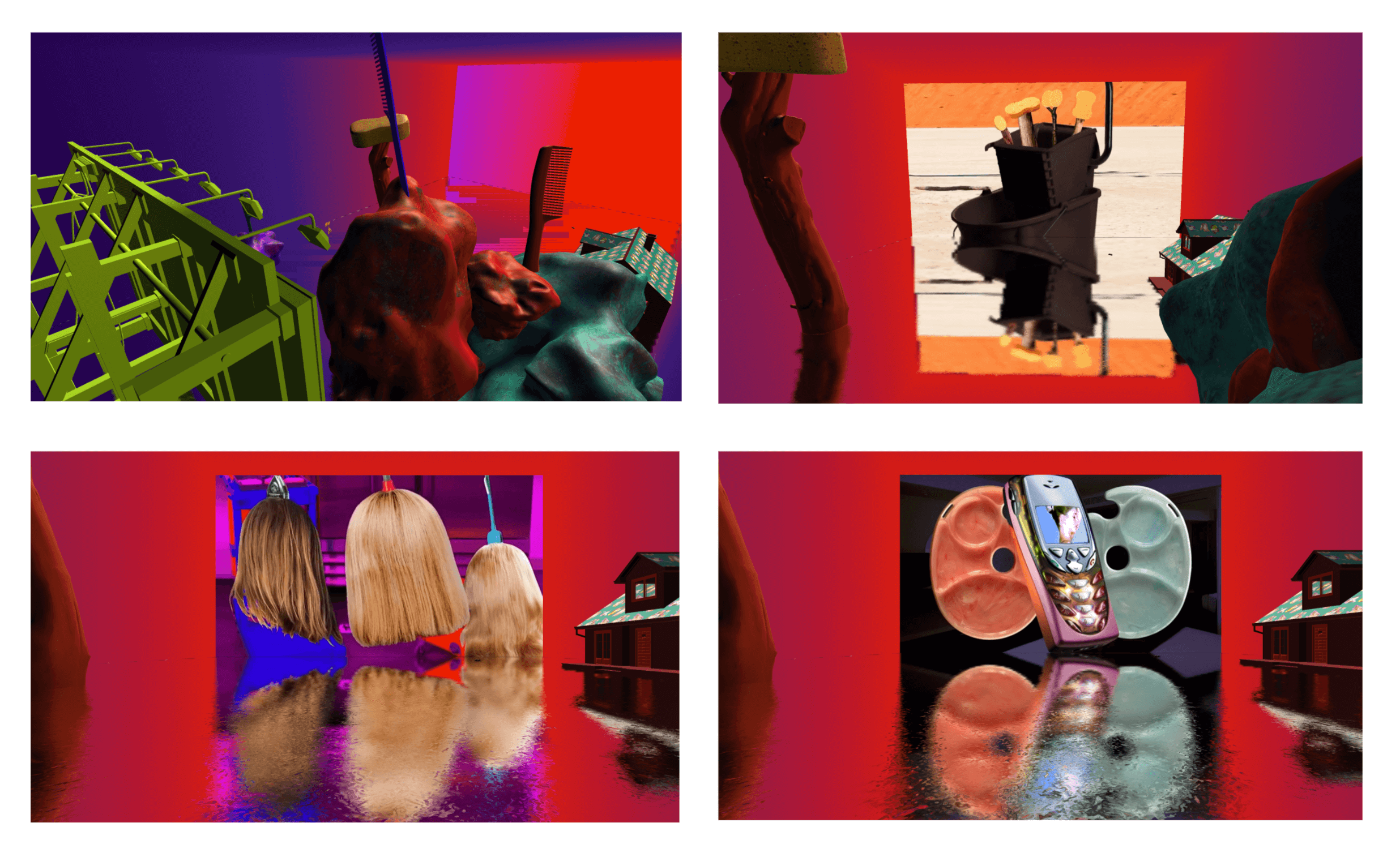
The entire wall at the back of the room becomes a monitor, and images are played.
One-sixth of the space, which is composed of cubes, gradually changes its color and becomes a video.
In the video, there is a space that is different from this one, and I feel that there is some kind of law or story on the other side.
The images are sent to us as if to shake the objects of this world, while reconfiguring the physical properties and presence of the objects, so that the images, objects, and VR space echo each other, twisting their respective meanings.
Takuro Tamayama has also created works in which cubes are placed in the exhibition space to create a nested structure of space.
In this VR space, objects such as rooms, picture boards, and monitors are repositioned in a way that is slightly different from the rhythm of the space as perceived from the natural line of movement, creating a situation that changes the way the objects are.
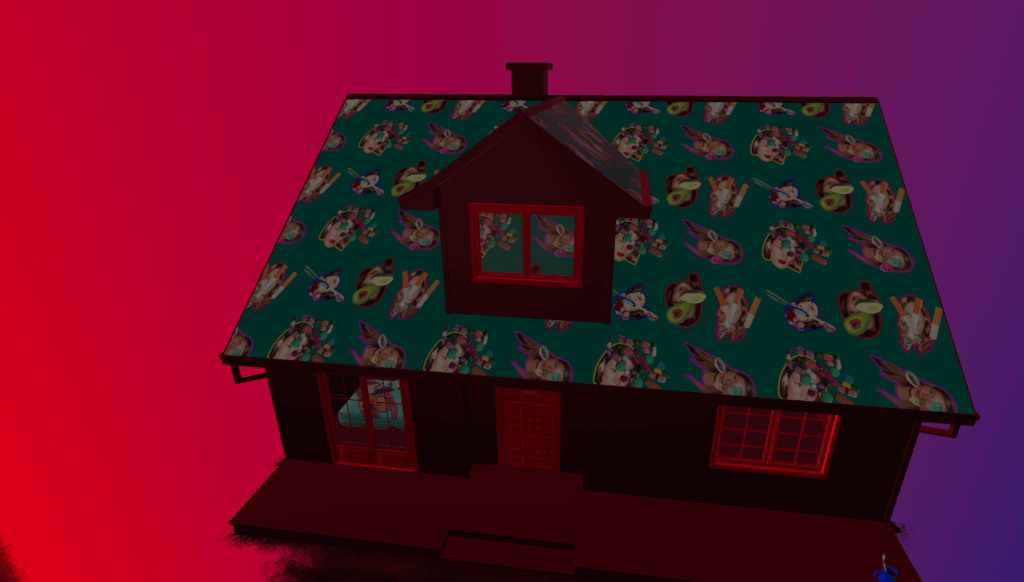
House
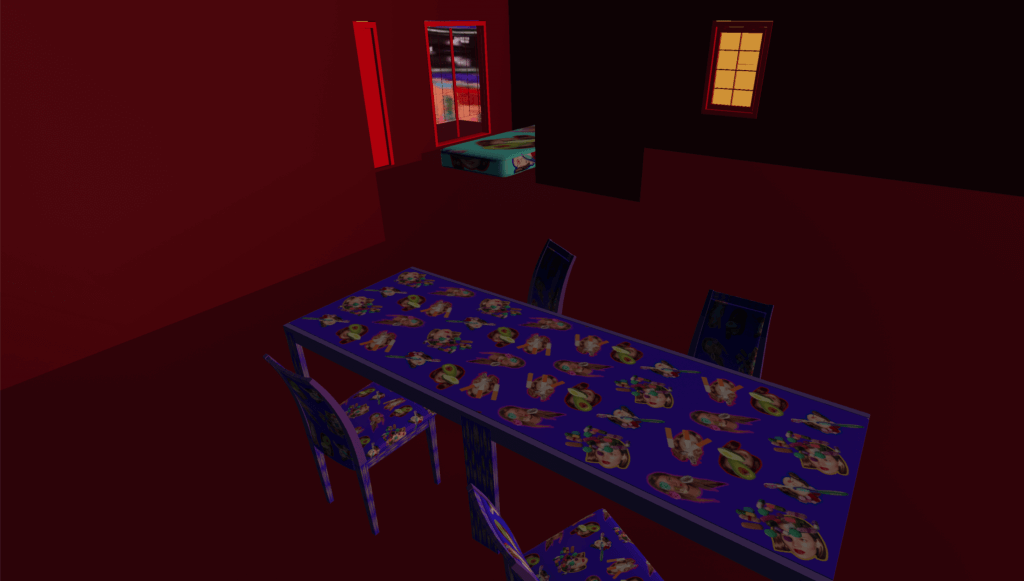
Inside the house
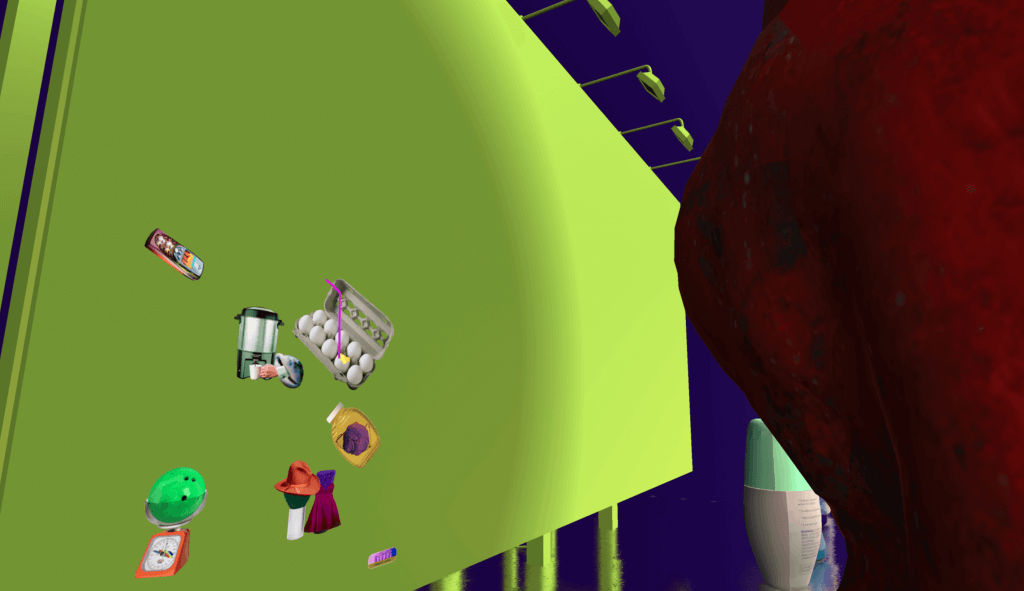
Lower left
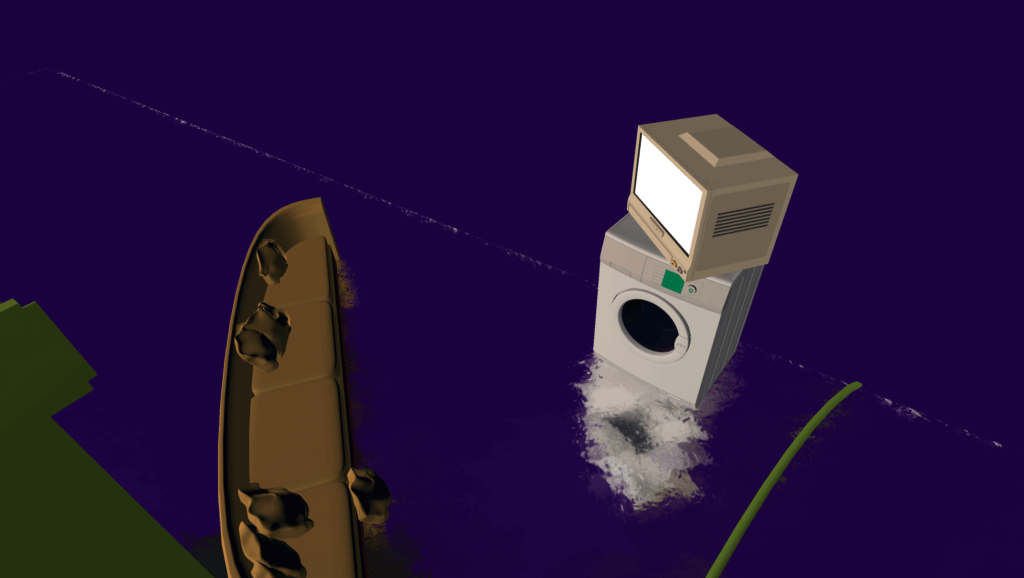
Washing machine
Although this is a painterly space, the composition of the space itself, the colors and the light foregrounding rather than the elements of the painting, matches the VR space.
Like the first work in the tour, Strange Swamp Beat, this work also has a worldview that evokes capitalist realism, such as hyperwave and accelerationism, but it is a work in which visual expression has a higher priority than music, and in which materiality, such as color and light, has a higher presence.
Enjoying the VR while comparing the works was one of the best parts of the tour.
3.STEREO TENNIS NEON TOWN by Stereo Tennis
So far, I have seen VR works produced by artists in various fields such as music, photogrammetry and photography, video, and installation, but this work extends the world view of Stereotennis, a graphic artist and illustrator, into VR.
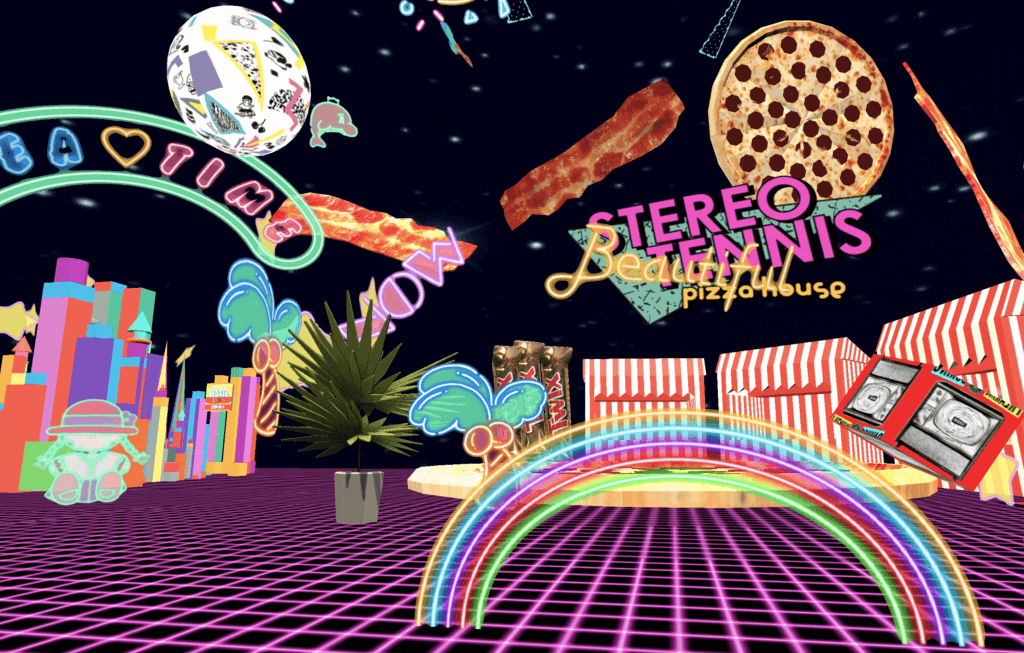
First view after entering the scene
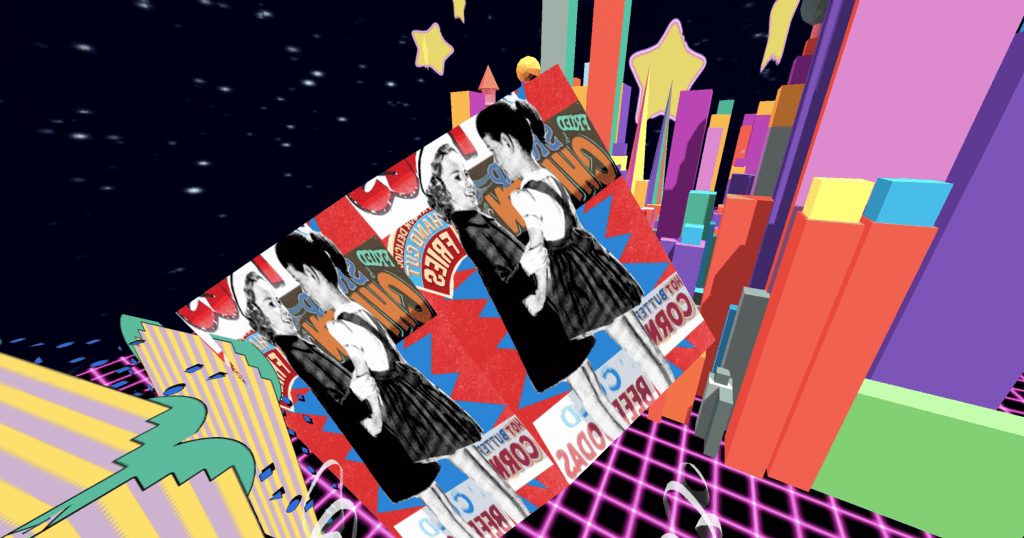
Collage on a cube
Mr. Taniguchi said, “This is the work of a person who is good at creating flat objects, but I wondered if it was possible to do this by placing flat objects in space, and the space was quite calculated”.
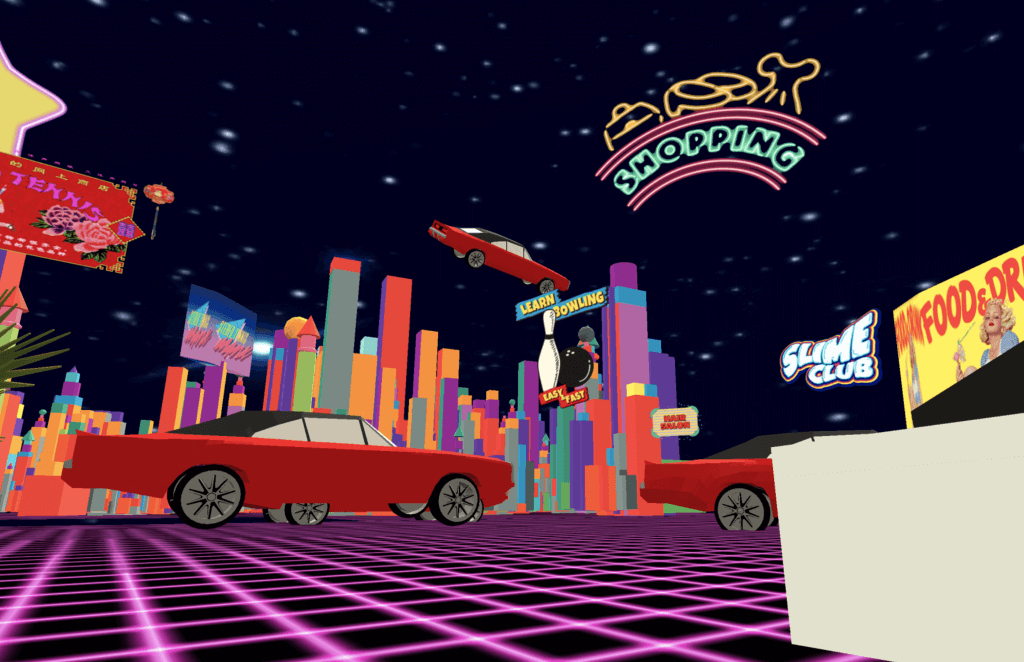
Even the cars blend in.
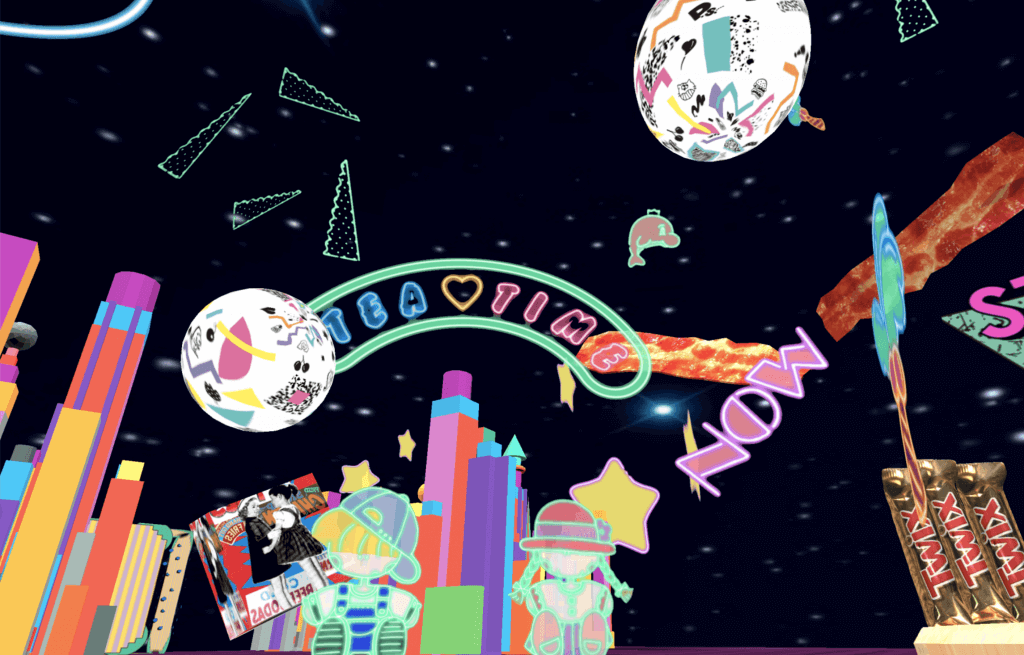
Spheres and triangles
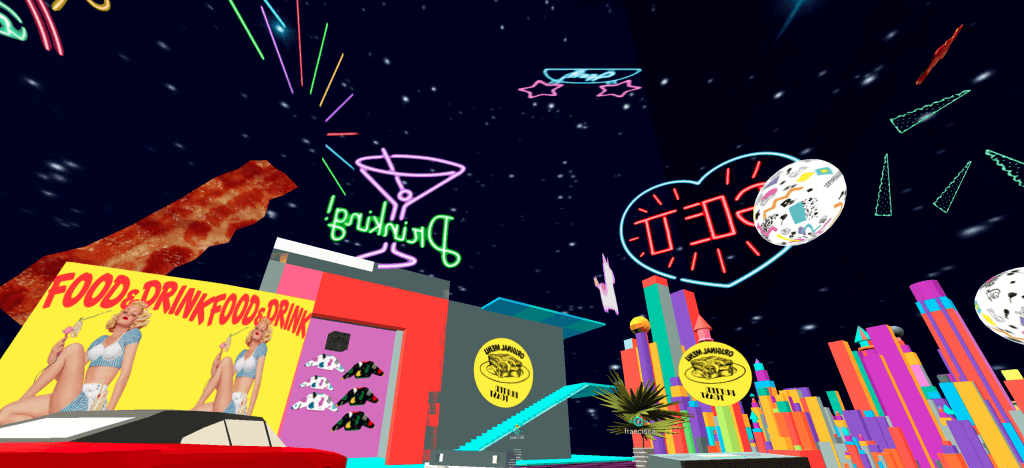
Multiple words and images overlap as information.
This work also has a nostalgic 80’s feel to it.
The worldview of retro-animation and retro-futurism, which seem to reflect the future envisioned in the past, overlaps with VR itself, a medium that has actually raised expectations of the past and undertaken various concepts, amplifying the nostalgia.
5.UPDATE RINNE ver2.5 -digital data hometown- by Takakura Kazuki
This is a work that was part of a series of projects in which the work was updated and exhibited by moving back and forth between real and virtual space.
The artist originally used a lot of emoticons and dots in her works.
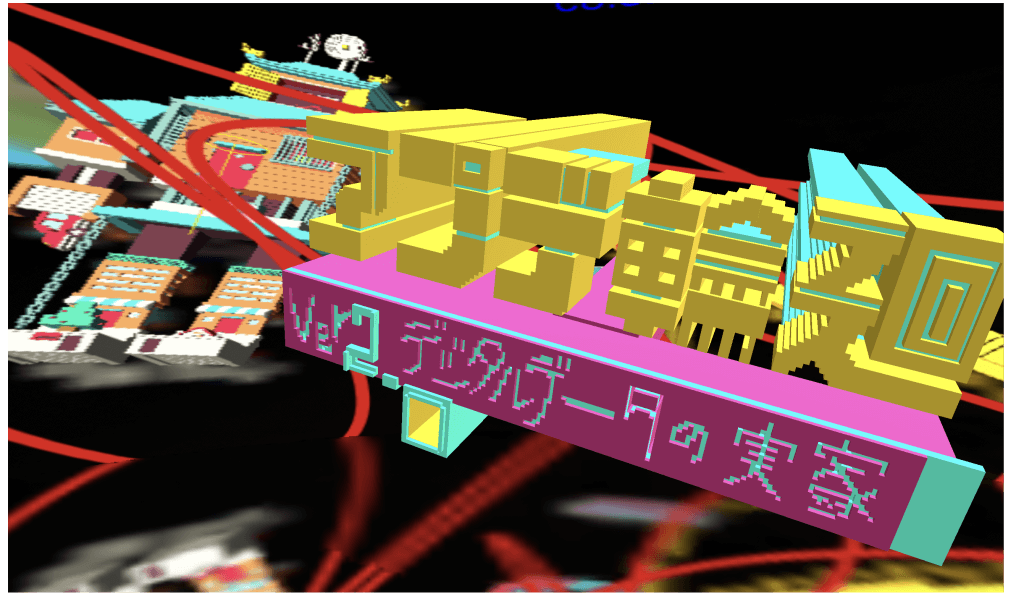
Appellation reincarnation!
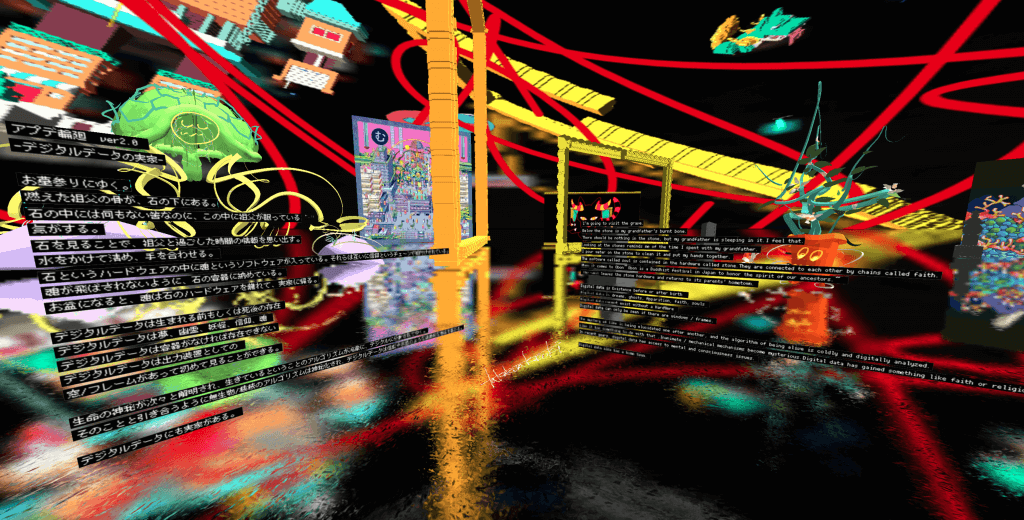
I go to visit the grave. The bones of my burnt grandmother lie beneath the stone
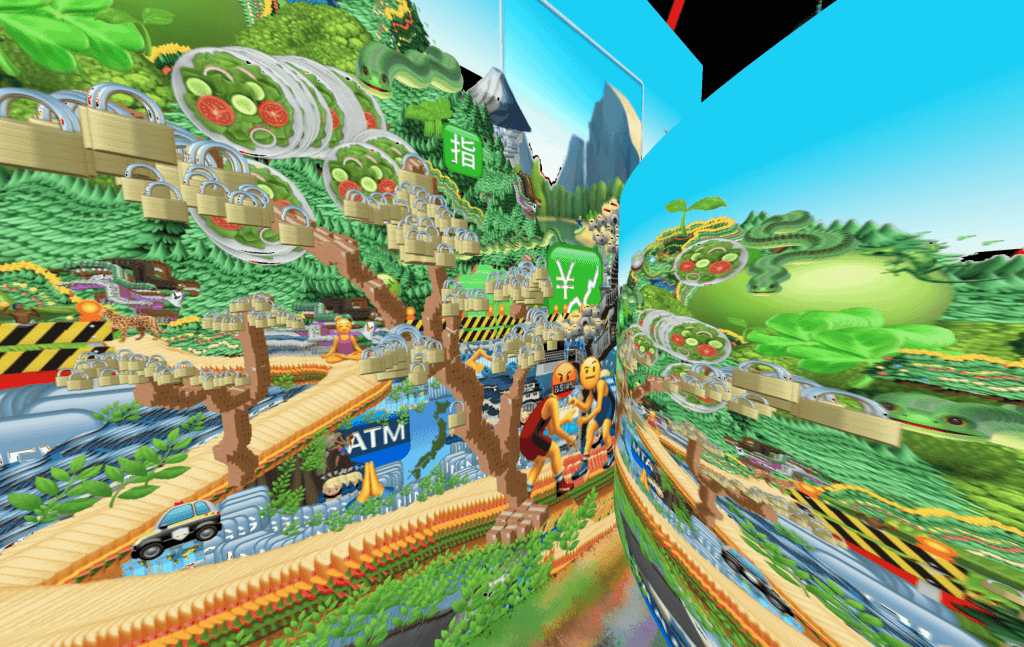
Emoji
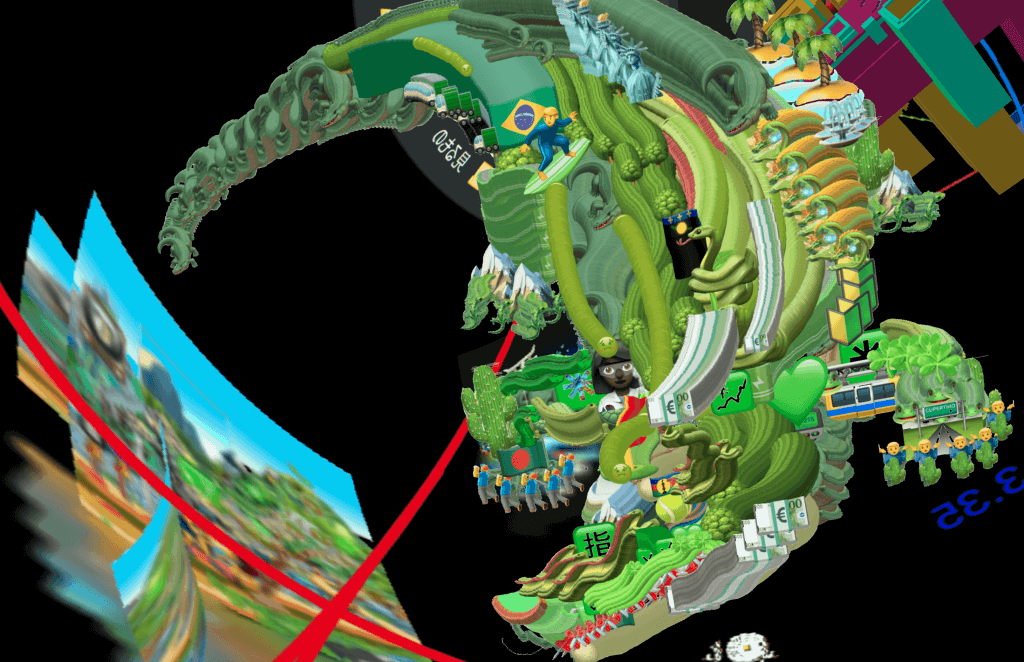
Alligator
There are many hands in one work, and the world is made up of multiple layers of images, such as using TiltBrush to draw illustrations in VR space, developing Gif images on the screen, and characters made of dots.
The high density of interesting objects and images, such as tombs, mysterious spiritual creatures, and motifs related to religion, was well received by Mr. Taniguchi.
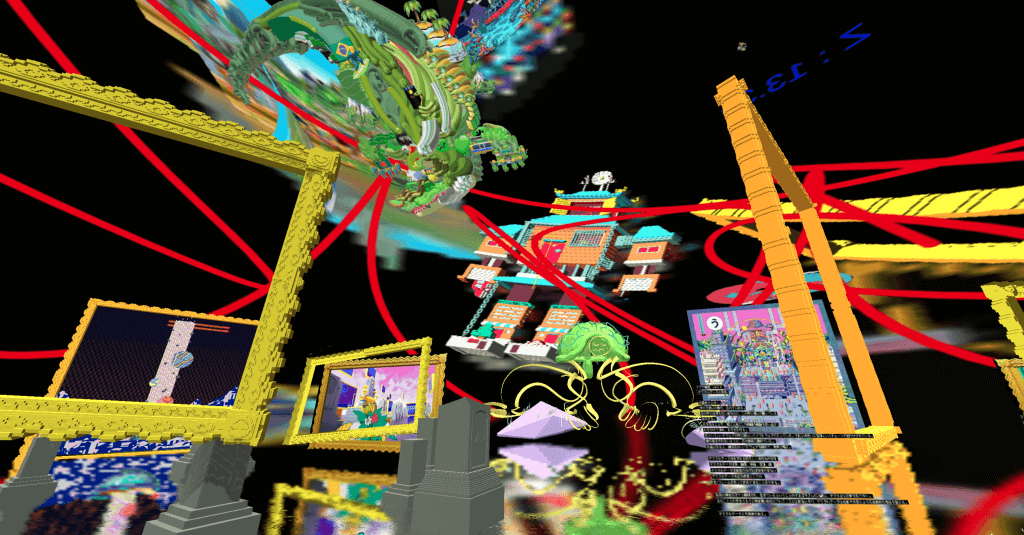
It’s a landscape.
It was also pointed out that the extensive use of picture frames creates a multi-layered “certain gaze from a certain point = frontality” with windows, and then the frames are removed or dismantled, creating an effect of inducing a certain point of view and displacing it.
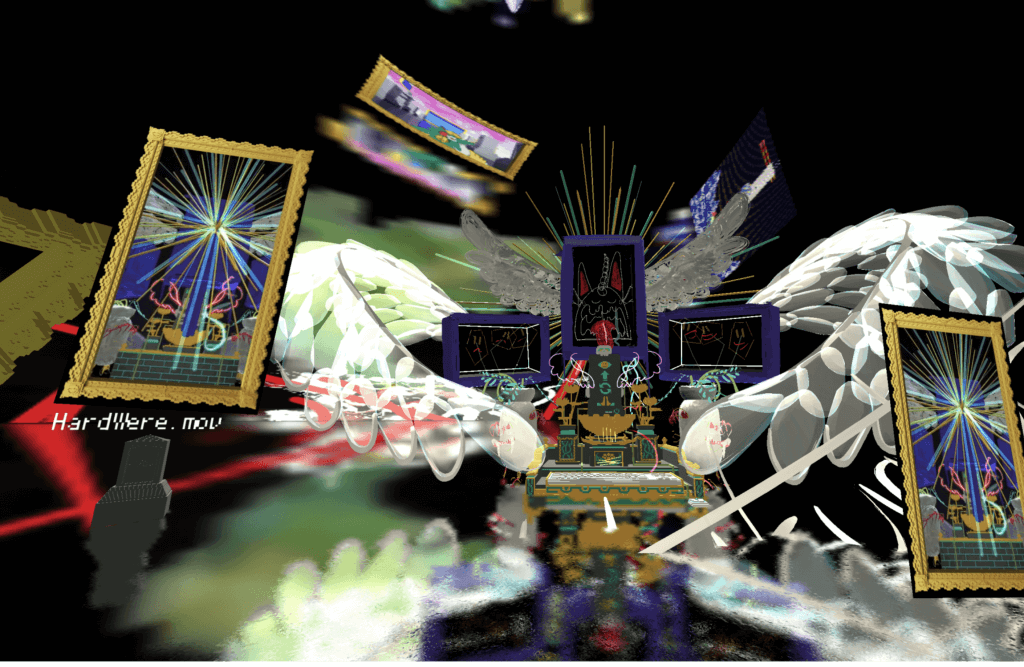
The tomb. Please go to the VR to get closer and see the fine details!
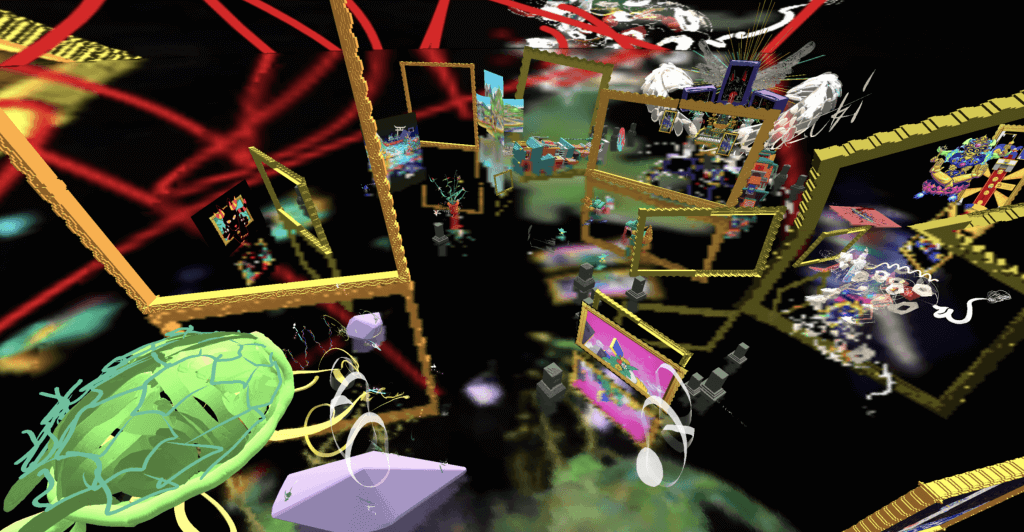
There are many images that I have not been able to introduce.
There are file icons floating in the sky above, and the 3DCG editor gizmo is directly attached to the file, so the experience itself is designed to make you feel like you are inside a specific file.
The images on the outside of the work are also developed from objects within the work, emphasizing the multi-layered structure of this world.
The tour was a summary of NEWVIEW’s activities to date.
Mr. Taniguchi said that he enjoyed the experience of touring around the works in VR. He said that it was like a tour given by a curator at a museum, but it was also new in that it was a tour where you could move around freely and enjoy the space as only VR can do.
STYLY app is now available on HTC VIVE
At the end of this tour, there was an announcement of a new STYLY function that can be used with HTC VIVE.
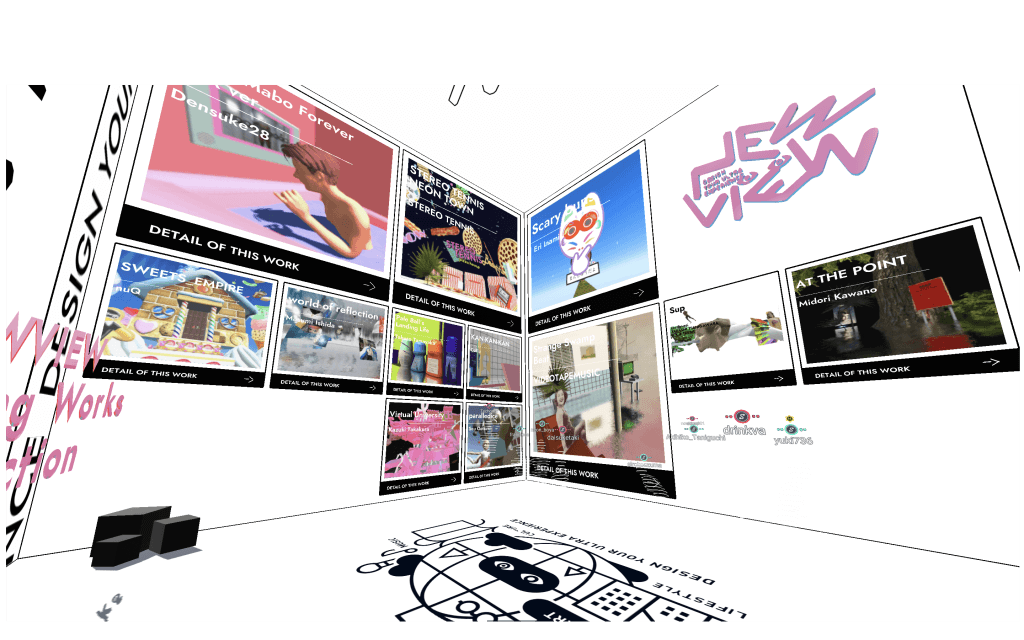
Scene of the portal function
Like this tour, you can manage tours where you experience multiple VR scenes in a way that you can access them from one room.
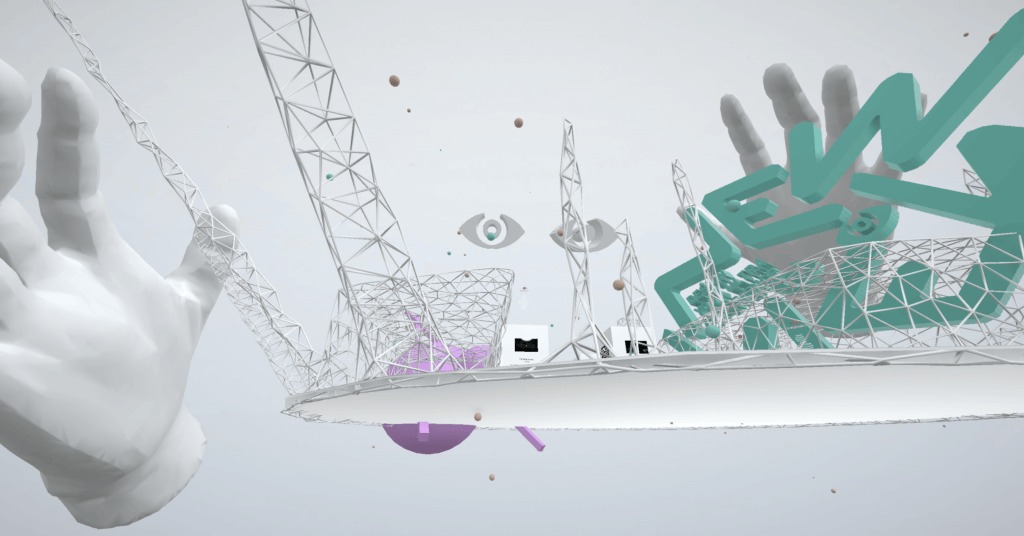
Venue
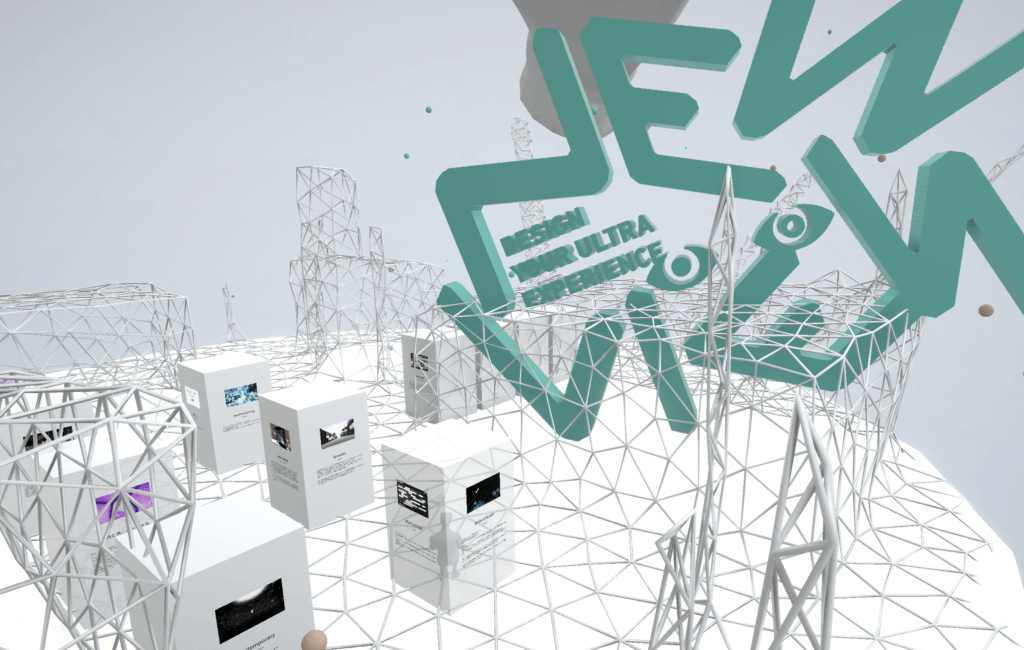
Venue 2
There is a venue where you can see the NEWVIEW AWARD winning works so far.
The space is structured in a way that overlaps with the venue that was exhibited at PARCO.
NEWVIEW 2020 VIRTUAL EXHIBITION :
https://newview.design/news/virtualexhibition_2020
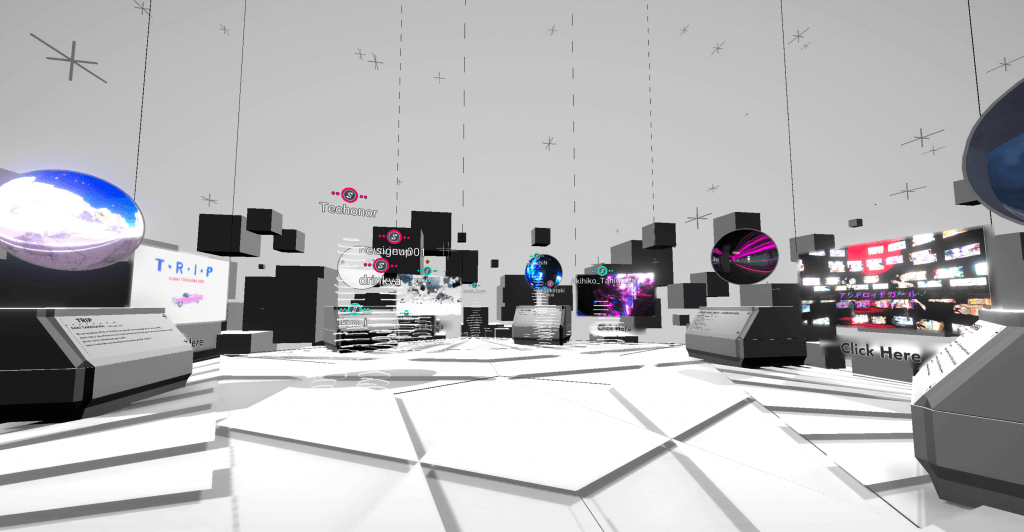
Particle live works
There is also a portal featuring the VR music scene, where you can see AWARD-winning works and some of the works created in collaboration with STYLY and artists.
More details:
https://prtimes.jp/main/html/rd/p/000000095.000033579.html
URL for HTC VIVE PORTz:
https://www.viveport.com/5b0ed048-4243-4c9c-b603-729377e3373d
These are the contents of this tour.
It was fun to look around the VR works while talking with Mr. Taniguchi and the participants, creating a strange sense of Unity.
STYLY will continue to hold various tours and events in the future, so please join us!
